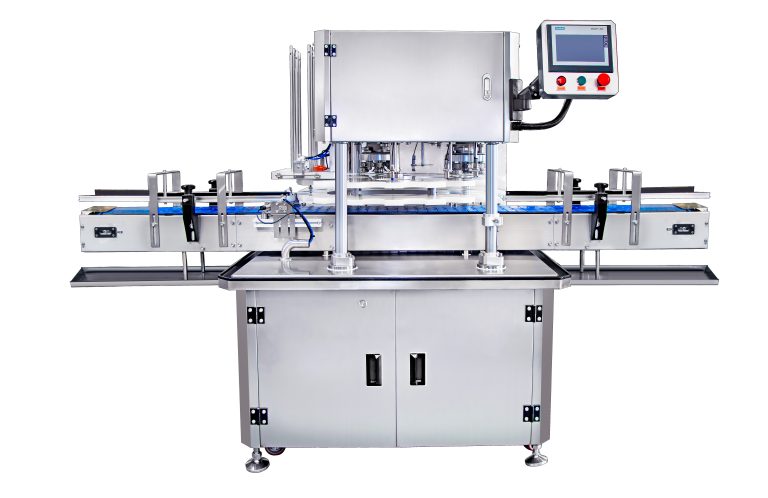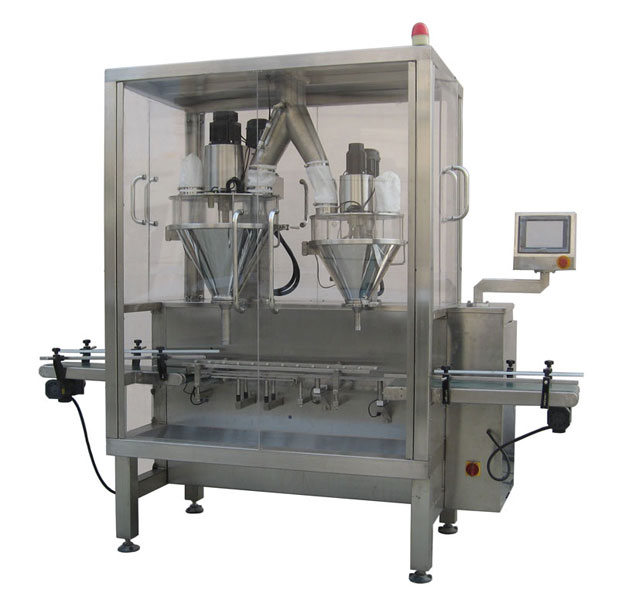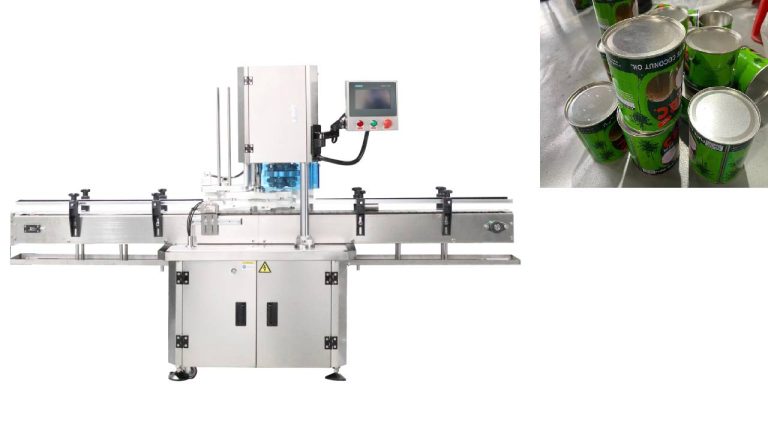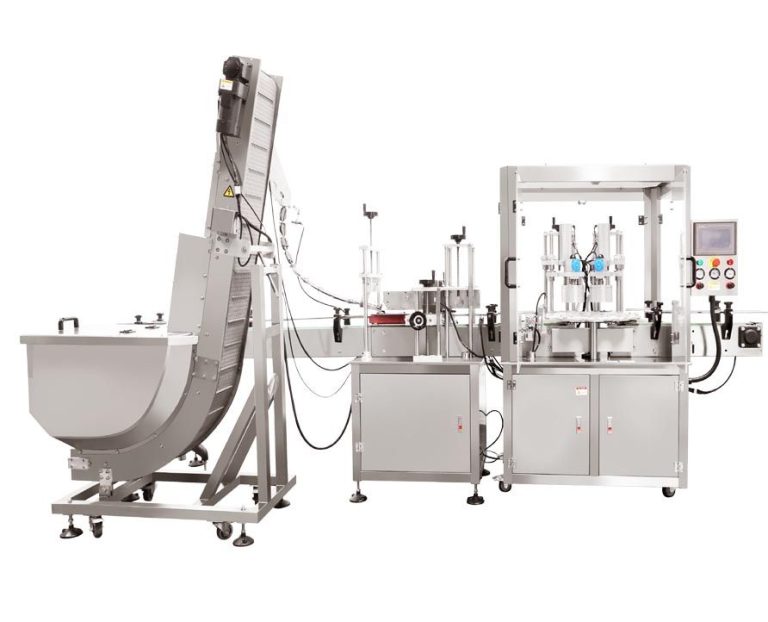Table of Contents
Beneficios de utilizar una máquina taponadora de garras con servocontrol de cabezal doble para envasado de botellas
En el mundo del envasado de botellas, la eficiencia y la precisión son factores clave para garantizar un proceso de producción exitoso. Uno de los aspectos más importantes del envasado de botellas es el proceso de taponado, ya que es crucial para mantener la integridad del producto dentro de la botella. Aquí es donde entra en juego una máquina taponadora de garras con servocontrol de doble cabezal, que ofrece una variedad de beneficios que pueden mejorar en gran medida la eficiencia y la calidad del proceso de taponado.
Uno de los principales beneficios de utilizar una máquina taponadora de garras con servocontrol de doble cabezal es su capacidad para tapar botellas con un alto nivel de precisión y consistencia. La tecnología de servocontrol permite un control preciso sobre el proceso de taponado, asegurando que cada botella esté tapada con la cantidad correcta de torque. Esto es esencial para prevenir fugas y garantizar que el producto dentro de la botella permanezca fresco y no contaminado.
Otro beneficio de una máquina taponadora de garras con servocontrol de doble cabezal es su capacidad de alta velocidad. Con dos cabezales taponadores que funcionan simultáneamente, esta máquina puede tapar botellas a un ritmo mucho más rápido que las máquinas tapadoras tradicionales. Esto puede aumentar en gran medida la producción general, permitiendo tapar más botellas en menos tiempo.
Además de su velocidad y precisión, una máquina taponadora de garras con servocontrol de doble cabezal también ofrece versatilidad en términos de tamaños de botellas y tipos de gorra. La máquina se puede ajustar fácilmente para adaptarse a diferentes tamaños de botellas y estilos de tapas, lo que la hace adecuada para una amplia gama de necesidades de envasado. Esta flexibilidad es esencial para los fabricantes que producen una variedad de productos en diferentes tamaños y formas de botellas.
Además, la tecnología de servocontrol utilizada en esta máquina permite una fácil integración con otros equipos de envasado, como máquinas llenadoras y etiquetadoras. Esta perfecta integración puede agilizar todo el proceso de envasado, reducir el riesgo de cuellos de botella y garantizar una línea de producción fluida y eficiente.
En general, los beneficios de utilizar una máquina taponadora de garras con servocontrol de doble cabezal para el envasado de botellas son claros. Desde su alto nivel de precisión y consistencia hasta su velocidad y versatilidad, esta máquina ofrece una variedad de ventajas que pueden mejorar en gran medida la eficiencia y la calidad del proceso de taponado. Al invertir en esta avanzada tecnología de tapado, los fabricantes pueden garantizar que sus productos estén sellados de forma segura y listos para su distribución, lo que en última instancia conduce a una mayor satisfacción del cliente y una mayor rentabilidad.
Cómo mantener y solucionar problemas adecuadamente en una máquina taponadora de garras con servocontrol de cabezal doble
El mantenimiento y la resolución de problemas de una máquina taponadora de garras con servocontrol de doble cabezal es esencial para garantizar su rendimiento óptimo y su longevidad. Estas máquinas se utilizan comúnmente en la industria embotelladora para tapar botellas con precisión y eficiencia. El mantenimiento adecuado y la resolución de problemas oportuna pueden evitar costosas averías y tiempos de inactividad, lo que en última instancia ahorra tiempo y dinero para la empresa.
Para mantener adecuadamente una máquina taponadora de garras con servocontrol de doble cabezal, la limpieza y lubricación periódicas son clave. El polvo, los desechos y los residuos del proceso de tapado pueden acumularse en los componentes de la máquina, lo que provoca fallos de funcionamiento y una disminución del rendimiento. Es importante limpiar a fondo la máquina después de cada uso, prestando especial atención a los cabezales taponadores, garras y cintas transportadoras. Usar un detergente suave y un cepillo suave puede ayudar a eliminar la acumulación rebelde sin dañar la máquina.
Además de limpiar, lubricar las piezas móviles de la máquina es fundamental para un funcionamiento suave. La aplicación de un lubricante de alta calidad a los cabezales taponadores, las garras y otros componentes móviles reducirá la fricción y el desgaste, lo que prolongará la vida útil de la máquina. Se recomienda seguir las pautas del fabricante en cuanto a la frecuencia de lubricación y el tipo de lubricante a utilizar.
También es necesaria una inspección periódica de los componentes de la máquina para identificar cualquier signo de desgaste o daño. Los pernos flojos, las correas desgastadas y las mangueras agrietadas pueden provocar fallos de funcionamiento y riesgos para la seguridad. Al realizar inspecciones de rutina, se pueden abordar problemas potenciales antes de que se conviertan en problemas mayores. Reemplazar las piezas desgastadas o dañadas rápidamente evitará reparaciones costosas y tiempo de inactividad.
Al solucionar problemas de una máquina taponadora de garras con servocontrol de doble cabezal, es importante comenzar con lo básico. Verificar la fuente de alimentación, las conexiones y la configuración a menudo puede resolver problemas comunes, como fallas de energía o componentes desalineados. Si la máquina no tapa las botellas correctamente, puede ser necesario ajustar la presión de tapado o la configuración de velocidad para lograr los resultados deseados.
Si la máquina continúa funcionando mal a pesar de los esfuerzos para solucionar el problema, se recomienda consultar el manual del fabricante o comunicarse con el soporte técnico. Los técnicos experimentados pueden brindar orientación sobre problemas más complejos y recomendar soluciones para restaurar la funcionalidad de la máquina. Es importante seguir sus instrucciones cuidadosamente para evitar causar más daños a la máquina.
En conclusión, el mantenimiento adecuado y la resolución de problemas oportuna son esenciales para garantizar el rendimiento óptimo de una máquina taponadora de garras con servocontrol de doble cabezal. Si siguen un programa regular de limpieza y lubricación, inspeccionan los componentes de la máquina y abordan los problemas con prontitud, las empresas pueden evitar costosas averías y tiempos de inactividad. Consultar las pautas del fabricante y el soporte técnico cuando sea necesario ayudará a resolver problemas complejos y a mantener la máquina funcionando sin problemas. Invertir tiempo y esfuerzo en mantener y solucionar problemas de la máquina beneficiará en última instancia a la empresa al aumentar la productividad y reducir los costos de mantenimiento.
Comparación de la máquina taponadora de garras con servocontrol de doble cabezal con las máquinas taponadoras tradicionales
En el mundo de la fabricación y el embalaje, la eficiencia y la precisión son factores clave para garantizar el éxito de un producto. Un aspecto crucial de este proceso es el taponado de botellas, que requiere una máquina que pueda sellar de forma segura la botella con una tapa. Las máquinas tapadoras tradicionales se han utilizado durante años, pero con los avances en la tecnología, las máquinas tapadoras de garras con servocontrol de doble cabezal han surgido como una opción más eficiente y precisa.
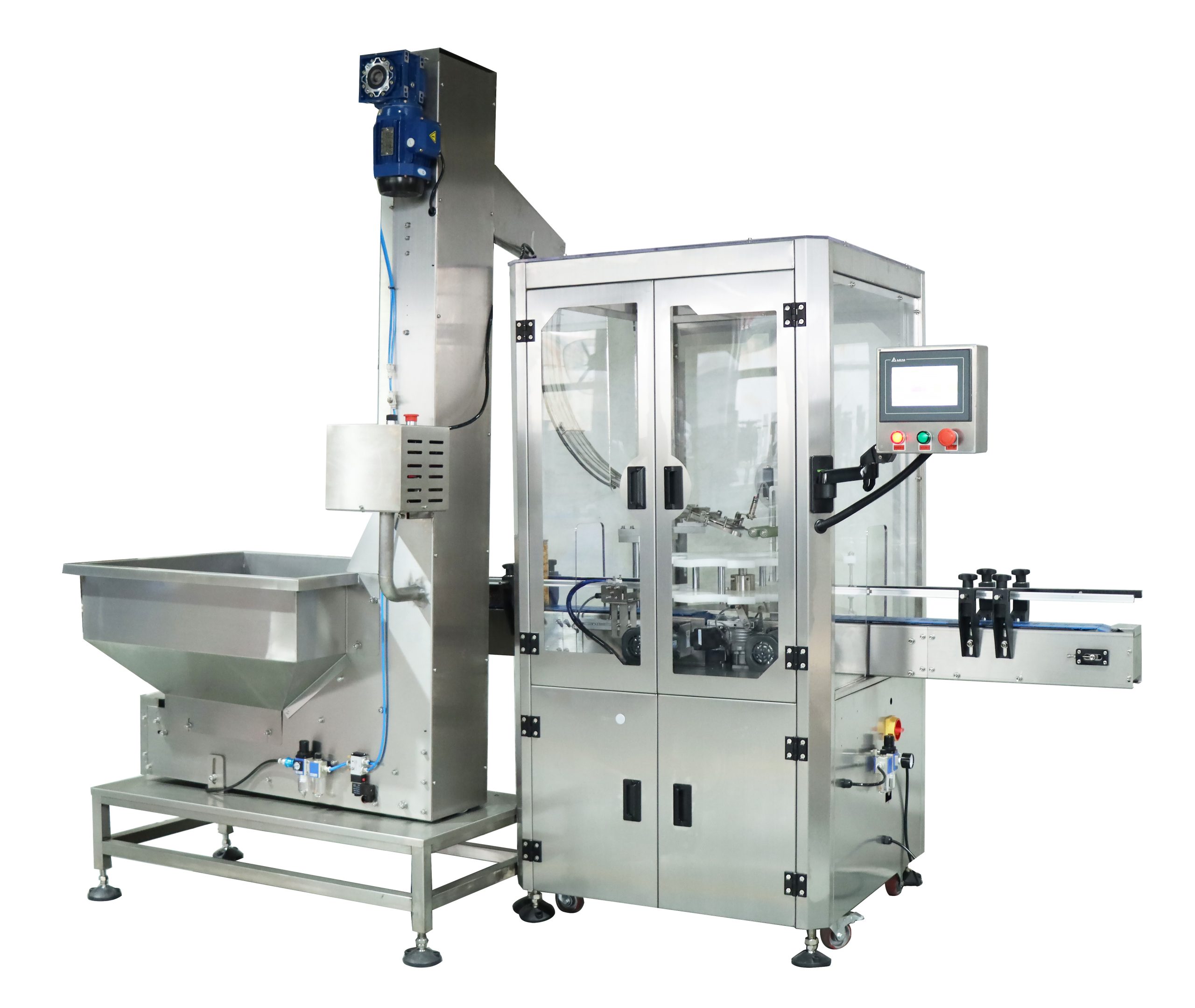
Las máquinas taponadoras tradicionales suelen utilizar un solo cabezal para tapar las botellas, lo que puede llevar mucho tiempo y ser menos preciso. Por el contrario, las máquinas tapadoras de garras con servocontrol de cabezal doble utilizan dos cabezales que funcionan simultáneamente para tapar botellas, lo que resulta en un proceso más rápido y preciso. Este sistema de doble cabezal permite una mayor productividad y eficiencia, lo que lo convierte en la opción preferida de muchos fabricantes.
Una de las ventajas clave de las máquinas tapadoras de garras con servocontrol de doble cabezal es su capacidad para ajustarse a diferentes tamaños y formas de botellas. Las máquinas taponadoras tradicionales a menudo requieren ajustes manuales para adaptarse a distintos tamaños de botellas, lo que puede llevar mucho tiempo y ser propenso a errores. Con las máquinas taponadoras de garras con servocontrol de doble cabezal, los cabezales se pueden ajustar fácilmente para adaptarse a diferentes tamaños de botellas, lo que garantiza un sellado seguro y consistente en todo momento.
Además, las máquinas taponadoras de garras con servocontrol de doble cabezal ofrecen un mayor nivel de precisión en comparación con las tradicionales. máquinas taponadoras. La tecnología de servocontrol permite un control preciso sobre el proceso de taponado, lo que da como resultado un sellado más uniforme y seguro en cada botella. Este nivel de precisión es crucial en industrias donde la calidad y consistencia del producto son primordiales.
Otra ventaja de las máquinas tapadoras de garras con servocontrol de doble cabezal es su versatilidad. Estas máquinas se pueden integrar fácilmente en líneas de producción existentes y se pueden personalizar para satisfacer necesidades de producción específicas. Es posible que las máquinas tapadoras tradicionales no ofrezcan el mismo nivel de flexibilidad, lo que hace que las máquinas tapadoras de garras con servocontrol de doble cabezal sean una opción más atractiva para los fabricantes que buscan optimizar sus procesos de producción.
En términos de mantenimiento y confiabilidad, las máquinas tapadoras de garras con servocontrol de doble cabezal también tienen una ventaja sobre las máquinas taponadoras tradicionales. La tecnología de servocontrol utilizada en estas máquinas es conocida por su durabilidad y confiabilidad, lo que reduce el riesgo de tiempo de inactividad y reparaciones costosas. Además, el sistema de cabezal doble permite un funcionamiento continuo incluso si un cabezal requiere mantenimiento, lo que garantiza una producción ininterrumpida.
Si bien las máquinas tapadoras tradicionales han sido un elemento básico en la industria manufacturera durante años, las máquinas tapadoras de garras con servocontrol de doble cabezal ofrecen una variedad de ventajas. que los convierten en una opción superior para muchos fabricantes. Desde mayor eficiencia y precisión hasta versatilidad y confiabilidad, estas máquinas están revolucionando el proceso de taponado y estableciendo un nuevo estándar para la tecnología de sellado de botellas. A medida que la tecnología continúa avanzando, es probable que las máquinas tapadoras de garras con servocontrol de doble cabezal se conviertan en la nueva norma en la industria, brindando a los fabricantes una ventaja competitiva en un mercado cada vez más acelerado.

